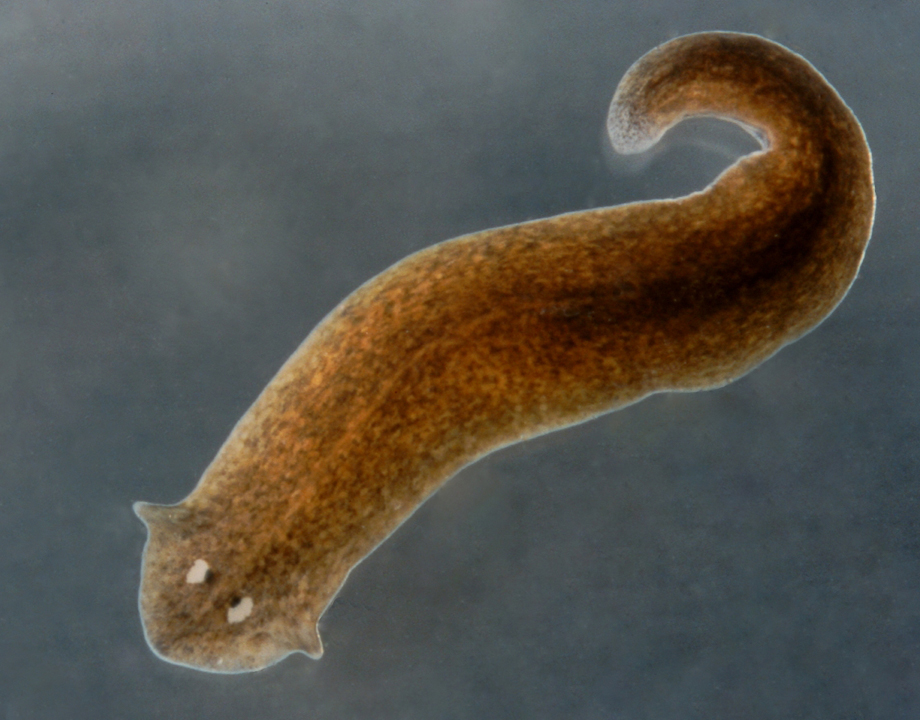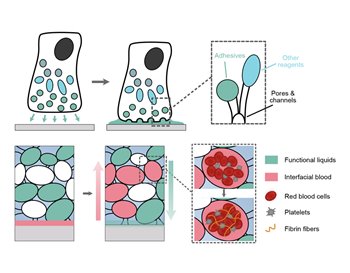New Medical Adhesive Stops Uncontrolled Bleeding
New Medical Adhesive Stops Uncontrolled Bleeding


Inspired by the unique structures of adhesives created by mussels and flatworms, engineers at McGill University have created a medical adhesive that outperforms standard glues and other sealants.
“Noncompressible hemorrhage is an unmet clinical challenge that accounts for high mortality in trauma,” said Jianyu Li, a professor of mechanical engineering at McGill University. “Rapid pressurized blood flow impairs the function and integrity of hemostatic agents and the adhesion of bioadhesive sealants.”
Typically, medical personnel apply pressure to a wound and close it with medical glue. However, with severe wounds, what if pressure cannot control the bleeding, or the wound’s surface is too bloody for glue? Inspired by an example from nature, Li and his team set out to develop a medical adhesive that staunches bleeding and is simple to apply to serious wounds—thereby saving those who otherwise would bleed to death.
How It Works
In the natural world, some marine creatures such as mussel plaques and flatworms can easily adhere themselves to slick, bio-fouled surfaces by generating a unique adhesive that is microstructural in form and contains infused liquid. “The adhesion capabilities of these microstructured bioadhesives are more effective than the commercial clinical glues and hydrogel-based bioadhesives in use today, which do not have porous structures and infiltrated liquid,” said Li.
Li created his bioadhesive by infusing a macroporous hemostatic xerogel, consisting of polyacrylamide and chitosan, with functional liquids—creating a structure and composition that are totally different from existing non-structured bioadhesives (NBs). The xerogel is tough, biodegradable, and active in promoting blood coagulation. Its macropores enable rapid and efficient removal of fluids from the wound interface site, such as whole blood. “The infused functional liquids enable universal adhesiveness, antibacterial function, storage stability, and easy implementation,” Li added.
The bioadhesive was tested on animal subjects. The results showed a significant improvement in hemostatic efficacy with rats and pigs compared to the standard adhesives that are most often used in clinical settings. Clotting occurred within seconds upon contact between the LIMB and the whole blood flowing from the wound. LIMB also absorbed this blood rapidly due to the capillary action from its large pores.
Become a Member: How to Join ASME
Other key findings:
-
LIMB achieved strong, complete adhesion on diverse surfaces, without the need for compression. This strong adhesion outperformed fibrin glues and medical tapes.
-
The macroporous and dehydrated nature of LIMB created a strong bond at the wound interface, which accelerated the uptake of interfacial fluid. Tissue surfaces that are covered with slick biological substances, such as mucus and blood, and which impair the performance of standard bioadhesives, are not a problem for LIMB.
-
The functionality of LIMB can be increased by altering the chemistry of the infused liquid; for example, an antimicrobial agent can be added to reduce the chances of infection.
“These results show the bioadhesives form a strong adhesion on ex vivo human and porcine tissues, and diverse engineered surfaces, without the need for compression, as well as on-demand instant removal and storage stability,” said Li. “Our material showed much better-improved safety and bleeding control efficiency compared to other commercial products. Beyond bleeding control, our material could one day replace wound sutures or deliver drugs to provide therapeutic effects.”
Moving Forward
Li’s bioinspired microstructured bioadhesive can rapidly absorb interfacial fluids, promote blood clotting, and facilitate interfacial bonding, sealing, and antibacterial function.
The key to these remarkable results is the structure of the bioadhesive.
“We demonstrated a significantly improved hemostatic efficacy and biocompatibility in rats and pigs compared to non-structured counterparts and commercial products,” Li said. “This work opens new avenues for the development of bioadhesives and hemostatic sealants.”
In addition to developing new bioadhesive technologies that are easier to implement and control, Li’s lab is active in clinical translation and commercialization. Its technologies have been licensed to companies such Amend Surgical, as well as its own spin-off company called ClickClot. His team is also developing new surgical tools such as smart sutures, hydrogels, and stem cell therapies for tissue regeneration, which require a multidisciplinary approach, including mechanical engineering. “Some ME applications are the integration of the bioadhesives with wearable devices and soft robotics, as well as the endeavor to better control bioadhesives using mechanical approaches such as ultrasound, actuators, and other devices,” said Li.
Mark Crawford is technology writer based in Corrales, N.M.






